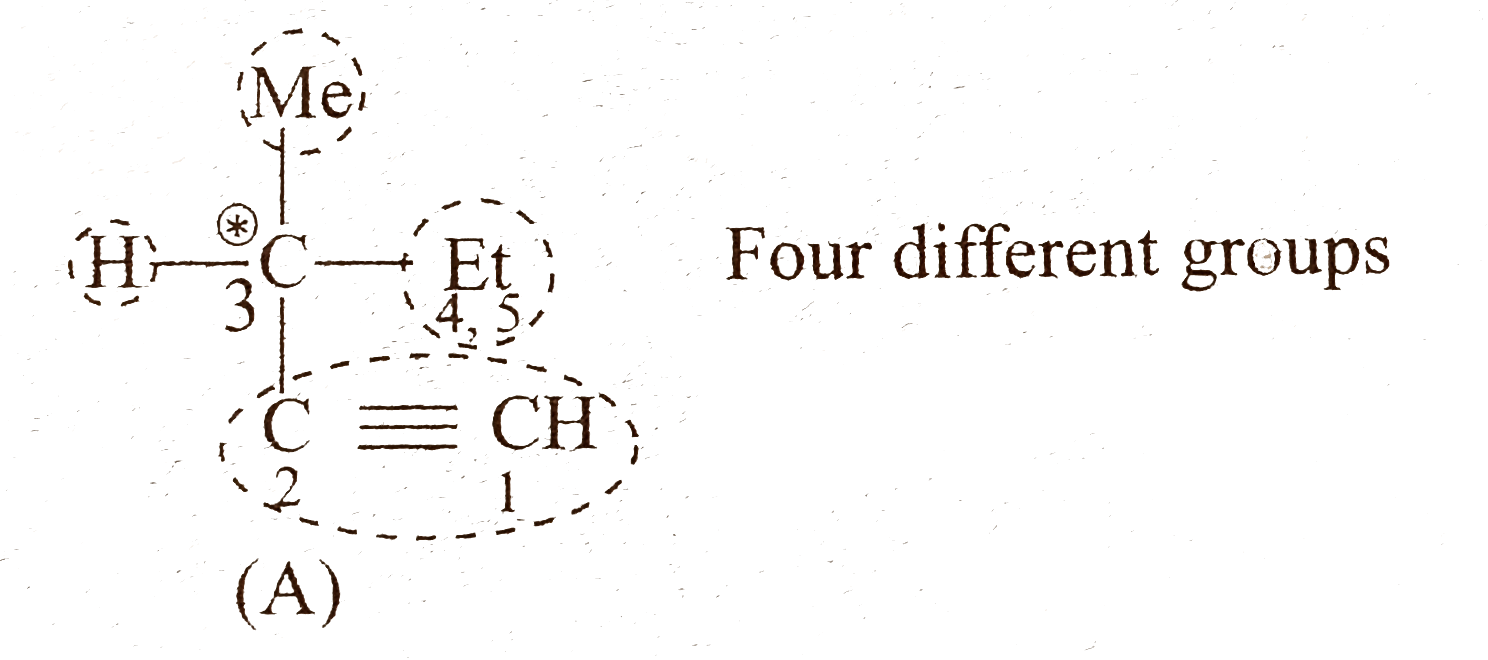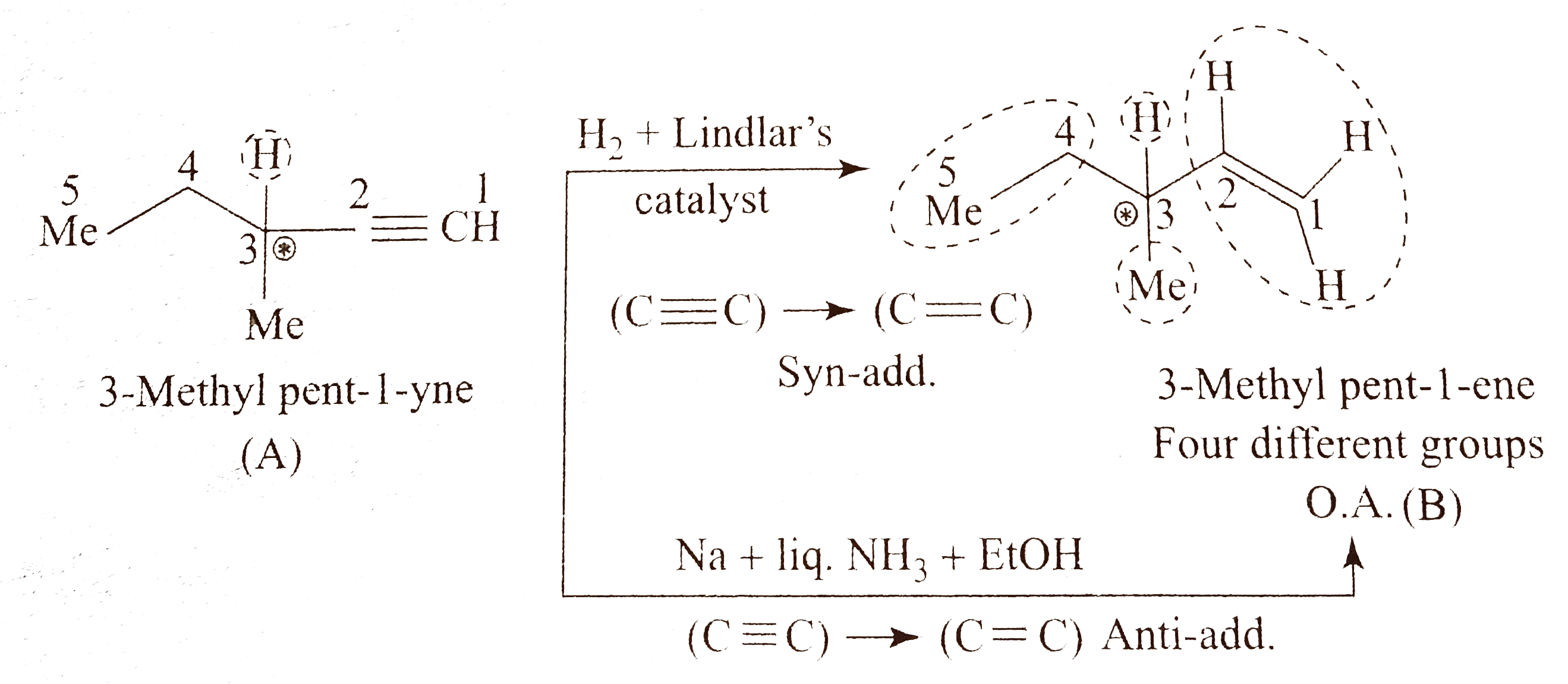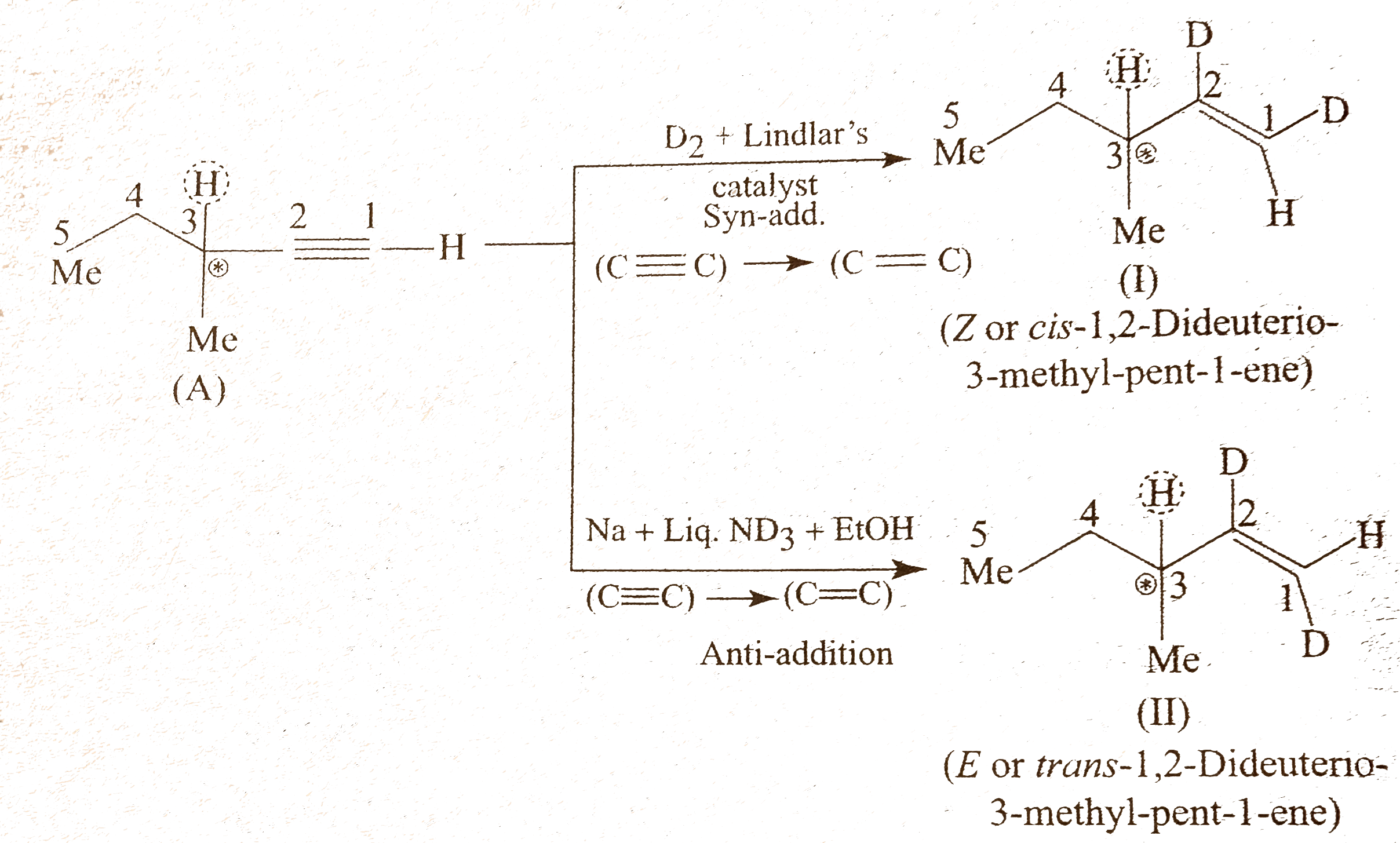Give the structure of an optically active alkyne (A) having the lowest molecular mass, which on hydrogenatio with Lindlar's catalyst and Birch reduction gives the same lowest molecular mass optically active alkene. Also explain why. ltbr> But alkyne (A) on hydrogenation with D2, with Lindlar's catalyst, and reduction with Na+liq. ND3+EtOH gives a different optically active alkene. Explain.
Video Solution
Text Solution
Proceeding in the same manner as in Example , the structure of alkyne (A) is :

O.A. alkyne with the lowest molecular mass.

around (2C=1C) at C−2 there are two different groups, 1 there are two same groups , so (B) does not show G.I.
Hence, the product obtained by two different reactions is the same.

In the above reaction, products (I) and (II) are different. They are G.I. ( diastereomers ) because at C−1 and C−2 there are two different groups.
|
Topper's Solved these Questions
- ALKENES AND ALKADIENESBOOK - CENGAGE CHEMISTRYCHAPTER - ALKENES AND ALKADIENESEXERCISE - EXERCISES
29 Videos
- ALKENES AND ALKADIENESBOOK - CENGAGE CHEMISTRYCHAPTER - ALKENES AND ALKADIENESEXERCISE - linked Comprehension Type
38 Videos
- ALKENES AND ALKADIENESBOOK - CENGAGE CHEMISTRYCHAPTER - ALKENES AND ALKADIENESEXERCISE - Single correct Answer
14 Videos
- ALKANES AND CYCLOALKANESBOOK - CENGAGE CHEMISTRYCHAPTER - ALKANES AND CYCLOALKANESEXERCISE - Archives
13 Videos
- ALKYNESBOOK - CENGAGE CHEMISTRYCHAPTER - ALKYNESEXERCISE - Exercises (Archives - Analytical and Desriptive Type)
4 Videos
Similar Questions
Knowledge Check
Amongst the following compounds, the optically active alkane having lowest molecular mass is
ACH2−CH2−CH2−CH3B C
C DCH3−CH2−C≡CH
DCH3−CH2−C≡CHAmongst the following compounds, the optically active alkane having lowest molecular mass is
ACH2−CH2−CH2−CH3B C
C DCH3−CH2−C≡CH
DCH3−CH2−C≡CHAn optically active alkene with the molecular fomula C6CH12 which upon hydrogenation gives optically inactive alkane is
A2 - hexaneB3 - methyl - 2- penteneC2 - methyl -2- penteneD3 - methyl-1-pentene
Amongst the following compounds, the optically active alkane having lowest molecular mass is:
View SolutionX' is an optically active alkane having lowest molecular mass, Predict the structure of the major product obtained on monochlorination of 'X'.
View SolutionX' is an optically active alkane having lowest molecular mass, Predict the structure of the major product obtained on monochlorination of 'X'.
View SolutionAn optically active alkene (X) has the molecular fromula C6H12. The actalytic hydrogen ation of (X) gives an achiral product. The structure of (X) would be :
View SolutionAmong the following compounds, the optically active alkane having the lowest molecular mass is:
View Solution
